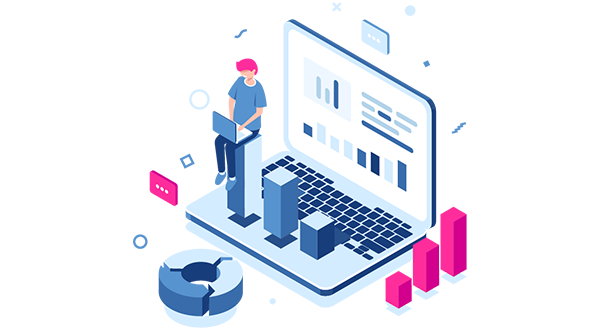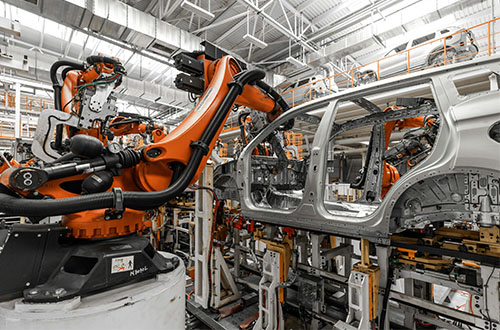

Tackling the Last Mile Challenge in Mainframe Modernization with AWS

Amit Okhandiar, mLogica president and CEO
The Evolution of Mainframe Modernization to AWS Cloud
At mLogica, we are committed to helping enterprises modernize their mainframe systems efficiently to the cloud. One of the greatest challenges in this journey is the often-overlooked final stage: The Last Mile Challenge. This is where most mainframe modernization projects stumble, typically due to an incomplete understanding of the legacy system’s complexities. While last year’s insights still hold true, and many projects fail by not addressing exotic technologies like Assembler, Easytrieve, Telon, IMS, IDMS, Datacom, PL/I, and more, our experience has grown, and so has our ability to ensure seamless migrations.
As modernization needs have evolved, AWS remains the frontrunner for enterprises transitioning from legacy systems to a modern, scalable cloud environment. At mLogica, we've expanded our services to fully leverage AWS' suite of cloud solutions, offering robust, secure, and highly available modernization strategies. Along with core technologies like COBOL and Db2, mLogica is an expert in migrating specialized environments such as Assembler, Easytrieve, Telon, PL/1, IMS, Datacom, IDMS, etc. Our portfolio has grown to include SAS, QuickJobs and IBM Transaction Processing Facility (TPF) Assembler, ensuring these exotic systems transition smoothly to AWS. Other last miles technology challenges are remediation of mainframe Schedulers and Security.
Ensuring Mainframe Modernization Success with AWS
As we highlighted previously, successful mainframe modernization begins with a comprehensive ecosystem analysis. Migrating a mainframe to AWS isn't just about moving workloads off the mainframe, it requires a deep understanding of every component within the system. At mLogica, our AWS migration methodologies ensure all core and peripheral technologies, including databases, schedulers, and utilities, are meticulously analyzed.
The Exotics: Now including QuickJobs and TPF Assembler on AWS
Handling exotic technologies in mainframe systems requires precise expertise, especially when transitioning to AWS. In addition to Assembler, Easytrieve, Telon, SAS, IMS, IDMS, Datacom and PL/1, two of the more challenging legacy systems that will need to be remediated are QuickJobs and TPF. Both are highly specialized, and failure to modernize these components effectively can result in major operational bottlenecks.
QuickJobs, a legacy job scheduling system, is critical for managing batch processes in many mainframe environments. mLogica's modernization process ensures that QuickJobs is refactored or rehosted on AWS in a way that maintains operational integrity, using AWS Batch and other scheduling tools available in AWS to optimize job management and scheduling processes.
TPF Assembler is another exotic mainframe component used heavily in high-transaction industries such as airlines and banking. Known for its high-speed processing capabilities, TPF must be handled with precision. Leveraging AWS's high-availability features and advanced database solutions, mLogica ensures that TPF’s transaction management performance is preserved while benefiting from the scalability and resilience of the AWS cloud. Our AWS-based modernization solutions maintain the high throughput and performance demands of TPF systems, ensuring a seamless migration.
Optimizing AWS for Mainframe Testing and Workload Migration
Testing remains a critical phase of the modernization process. Migrating mainframe applications—particularly those involving exotic languages like Assembler and newer languages like Java—requires rigorous unit testing. In the past year, mLogica has enhanced our AWS-based testing frameworks, designed specifically to ensure that mainframe workloads perform optimally in the cloud.
AWS provides various testing and monitoring tools, such as AWS CloudWatch and AWS X-Ray, which we integrate into the modernization process. These tools allow us to ensure that legacy workloads are fully optimized for the cloud environment. Whether refactoring legacy code or transitioning to microservices on AWS Lambda, our testing ensures a smooth transition, identifying potential performance issues before they occur in production.
AWS Cloud Benefits: Scaling for the Future
AWS offers a range of cloud-native features that are ideal for enterprises moving away from mainframe environments. The elasticity of Amazon EC2 for compute, Amazon RDS for database management, and Amazon S3 for highly durable storage, ensures that your newly modernized applications are not just hosted, but optimized for cloud performance. In particular, AWS’s migration services—such as AWS Application Migration Service—allow us to automate much of the workload transition, reducing the complexity and risk traditionally associated with mainframe modernization.
The Path Forward: Unlocking Future-Ready IT with AWS and mLogica
AWS offers the transformative power necessary to take your legacy mainframe systems into the future, and mLogica ensures every step of the journey is executed with precision. Whether tackling exotic technologies like QuickJobs and TPF or refactoring core workloads, our AWS-focused modernization strategy delivers both migration and innovation. With AWS’s scalable infrastructure, your enterprise will experience enhanced performance, security, and agility.
Partnering with mLogica means you’re not just solving today’s challenges—you’re building a cloud-native foundation for future growth. Trust mLogica to turn The Last Mile Challenge into a successful leap forward, unlocking the full potential of AWS to modernize your IT environment and drive your business forward.
If you're planning a migration to AWS or dealing with challenges in your current modernization project, let mLogica’s experts help. Reach out today to mLogica’s mainframe modernization team to begin your journey to a scalable, high-performance cloud environment with AWS.








































